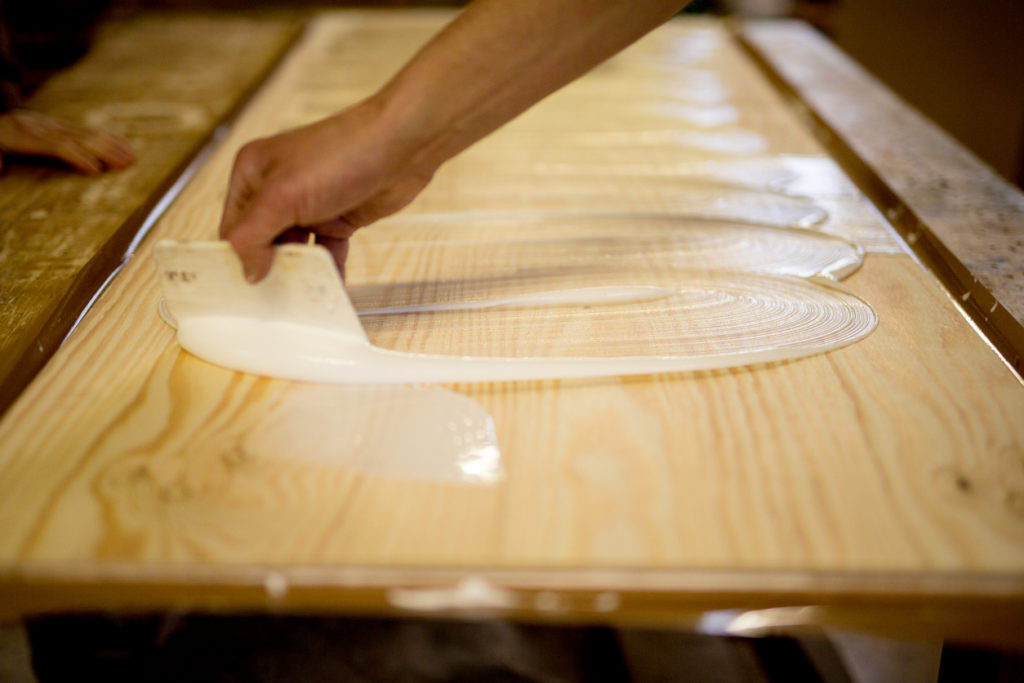
Glues have a variety of applications across all types of wood working tasks. A key to using them appropriately is knowing which kinds of adhesives work best for each purpose. Do you need a hot glue with a gun for application, or do you need a more robust water-based adhesive? Glue Machinery Corporation is here to help you get it right.
Hot Glue in Woodworking
If you need to combine two pieces of wood into one, it’s time to start heating up your hot glue gun. You may think that hot glue is used only in arts and crafts, but it can be extremely versatile for woodworking as well. Hot glue is a polymer-based adhesive that can be made from ethylene-vinyl acetate (EVA), polyesters, polyethylene, or ethylene-methyl acrylate (EMA). Each compound brings different properties to the table, such as strength, flexibility, heat resistance, or viscosity. Make sure that you know which kind of hot glue your project requires before you begin.
When to Use Hot Glue
The main benefit of hot glue is that it dries clearly and very quickly, which makes it ideal for woodworking crafts. Because it dries so fast, hot glue doesn’t penetrate the wood, so it can’t form a strong bond like water-based glues. But since a hot glue bond can be broken with minimal force, if you need to use it for a construction process, either choose a water-based glue or use the hot glue but then add a few screws for extra strength.
For projects that don’t need to stand up to a lot of stress, hot glue is extremely versatile and easy to use for a variety of woodworking purposes. It works beautifully on all kinds of wood, including painted or stained wood, and it can secure metal to wood if the metal isn’t too heavy. It seals very quickly. But since it doesn’t form an incredibly strong bond, if you make a mistake, you can break it fairly easily without damaging the wood and start over.
Or for those projects that involve only little pieces of wood, a small amount of hot glue will do the trick. Your hot glue gun can make a delicate situation that requires fine dexterity much easier to handle. A hot glue gun is the perfect bonding tool for any woodworking crafter.
Water-Based Glue in Woodworking
While there are plenty of options when it comes to using glue in woodworking, more often than not you will probably use water-based glue, which includes glues made from vegetable and animal compounds, latex glues, and resin or polymer-based glues. These glues have their uses in woodworking depending on the specific application.
Choosing the Right Glue for the Job
When it comes to securing wood, you may be surprised to learn that the best tool for the job is wood glue, which is a polymer-based glue that gains its securing power from polyvinyl acetate, also used in white glue such as the ubiquitous Elmer’s.
But for most at-home woodworking jobs, this type of glue is second to none when it comes to forming a strong, long-term wood-to-wood joining. Compared to hot glue, it has a fairly long drying time, so the glue can seep into the wood grain as it hardens, forming multiple anchor points and a very strong seal. Because these glues do take longer to dry, they are also very forgiving, so you will have time to adjust the joining, as necessary. Water-based glue bonds can last for many years if properly maintained but keep them out of the cold because the water in the glue can freeze and disrupt the bond.
How to Use It
To get the best possible hold with water-based glues, apply it to both sides of the wood you want to join. Not too much! You don’t want it spilling out of the seams. Using a brush or thin trowel, spread the glue across each surface to form a thin, uniform coating. Firmly press the pieces together and jostle them back and forth slightly so that the glue is evenly distributed. For best results, use a G-clamp to ensure that the pieces remain solidly held together and leave them to dry for at least 30 minutes or (preferably) overnight. Use sandpaper to remove any leakage once dried and enjoy your new larger piece of wood!
We can help!
We here at Glue Machinery want to help you get the best possible adhesive system for your project. Contact us and we will take your provided substrate samples through our Glue Diligence® process. We’ll test the material in our Glue Diligence® Lab and provide clear, unbiased recommendations, videos of the gluing and assembly process, and bond tests.


